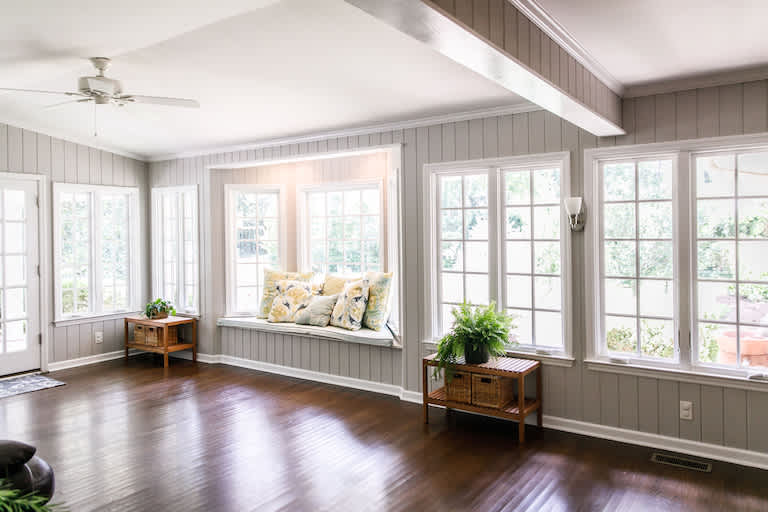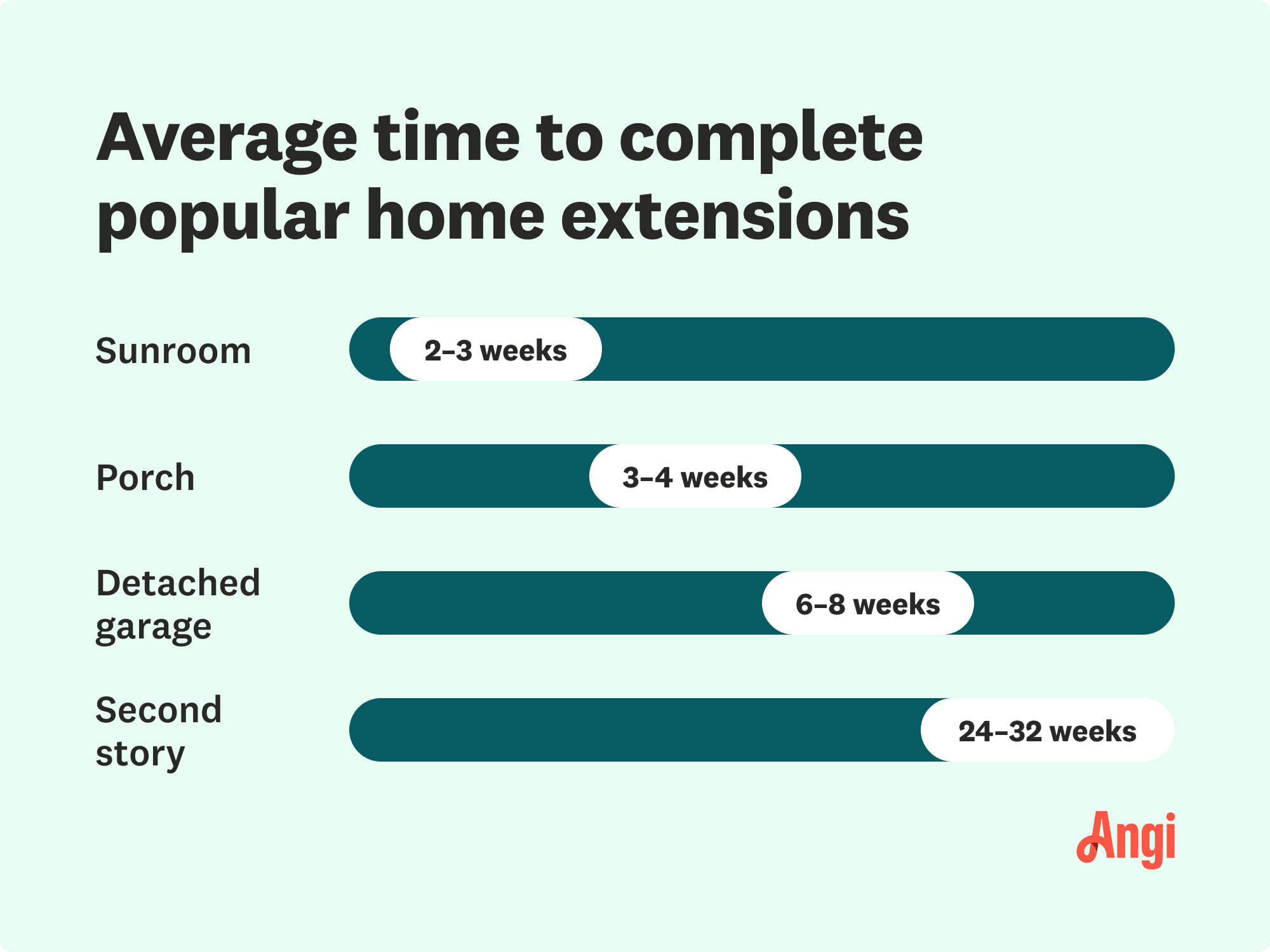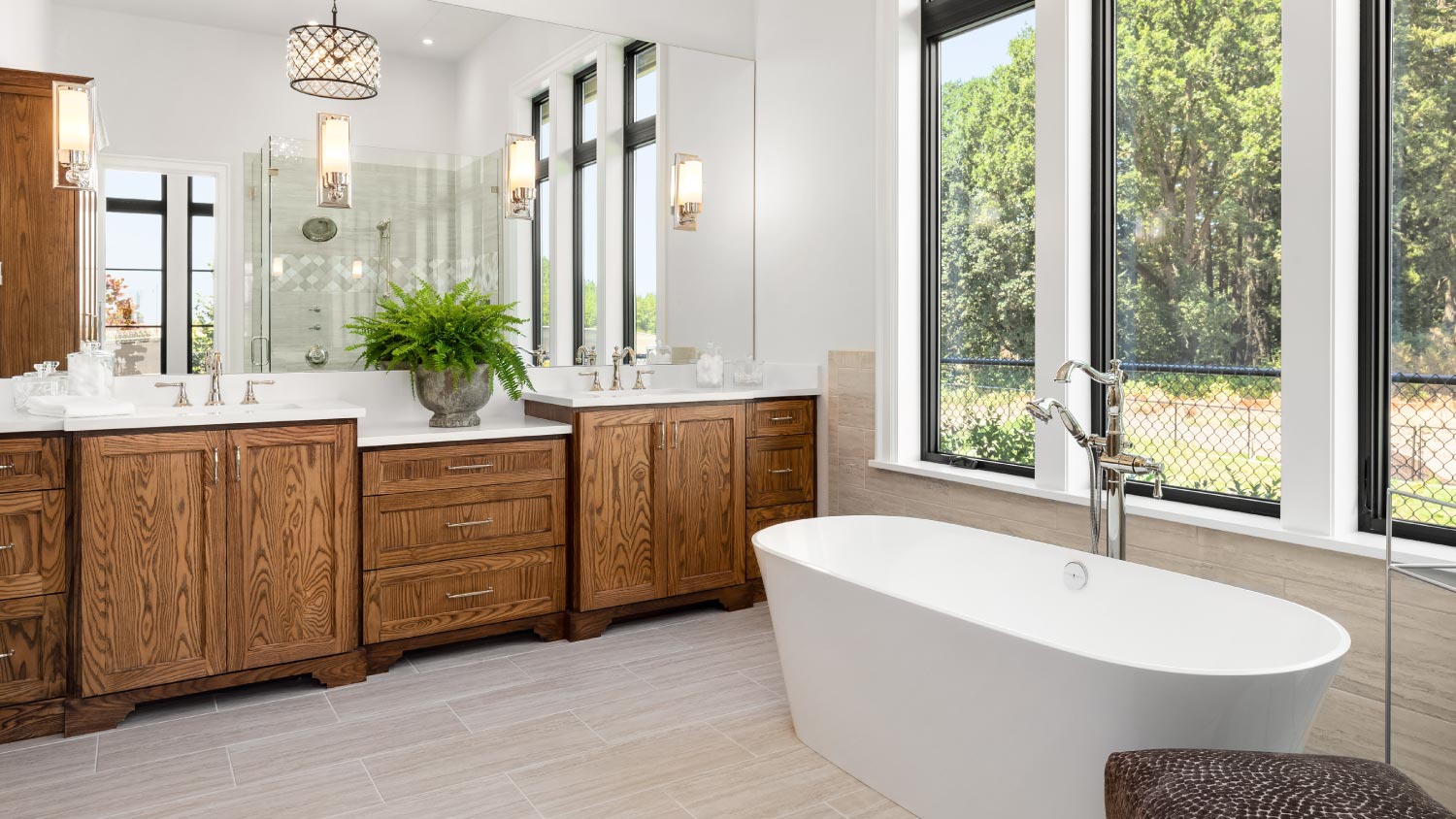
Remodeling your bathroom can add significant value to your home. Your bathroom remodel cost in Columbus, OH will depend on size, fixtures, materials, labor, and other factors.
A home addition costs an average of $43,792 in Tampa, Florida. Depending on the location, size, type, and materials, most homeowners spend between $22,452 and $65,133.


Building a home addition can add valuable square footage to your Tampa home with a new bedroom, bathroom, kitchen, or sunroom.
Using exterior materials that are resistant to wind, direct sun, and high winds to stand up to Tampa’s climate can add to your total project cost.
Hire a qualified Tampa general contractor or homebuilder to manage your construction project and ensure all work is up to code.
You’ll need to get a permit from Tampa’s Construction Services Division before adding a home addition.
If you’re looking to add square footage to your Tampa home, building an addition can provide the exact kind of extra living space you need. Building a home addition in Tampa costs an average of $43,792, with most homeowners paying between $22,452 and $65,133. The cost of an addition depends on the size and type, whether you build up to another story or out on ground level, and what types of materials you choose.
The cost of adding on to your Tampa home depends on a range of factors, from addition size and type to the materials you use. We break down some of the most common contributing factors to home addition cost and how you can expect them to affect your budget.
Home additions cost between $60 and $180 per square foot if you’re building out and between $250 and $450 per square foot if you’re building up. The cost to add a 10x10 room to a house costs an average of $12,000 if you build out and around $35,000 if you build up. The size of your addition will also affect how long building the addition takes, which can also cause your labor fees to increase for larger projects.
Remember that if you add square footage to your home, the cost of your homeowners insurance will increase accordingly. Before you embark on this project, speak to your insurance company about expected costs.
Where in those ranges your total falls also depends on the complexity of the room and its finishes. For example, adding a bathroom will often cost more than a bedroom since it requires additional plumbing and electrical work.
| Project Size (Sq. Ft.) | Bump-Out Build | Second Story Build |
|---|---|---|
| 60 | $4,125–$10,325 | $15,475–$25,800 |
| 80 | $5,500–$13,750 | $20,650–$34,400 |
| 100 | $6,875–$17,200 | $25,800–$43,000 |
| 150 | $10,300–$25,800 | $38,700–$64,500 |
| 200 | $13,750–$34,400 | $51,600–$86,000 |
| 300 | $20,625–$51,600 | $77,400–$129,000 |
| 400 | $27,500–$68,800 | $103,200–$172,000 |
As you can imagine, it takes many kinds of building materials to complete a custom home addition. Material prices vary widely, so your price could push closer to $65,133 if you choose luxury or high-end materials at each step of the way.
Framing Materials Cost:
| Framing Material | Average Cost per Sq. Ft. | Pros | Cons |
|---|---|---|---|
| Wood | $1–$5 | Cost-effective, easy to install | Fire risk, prone to pests and moisture problems |
| Steel | $2–$4 | Durable, fire-resistant | Complex installation, limits roof design |
Insulation Materials Cost:
| Insulation Material | Average Cost per Sq. Ft. | Pros | Cons |
|---|---|---|---|
| Blown-in | $0.50–$2.30 | Low-cost, fast installation | Prone to water damage, less durable |
| Fiberglass | $0.30–$1.50 | Fire-resistant, cost-effective | Lower R-value, easily damaged |
| Spray foam | $1.50–$4.90 | High R-value, resists pests and moisture | Higher cost, more flammable |
| Rockwool | $1.10–$3.10 | Durable, high R-value | Loose fibers can be a health risk, higher cost |
Roofing Materials Cost:
| Roofing Material | Average Cost per Sq. Ft. | Pros | Cons |
|---|---|---|---|
| Asphalt shingles | $1–$1.20 | Affordable, easy to install | Prone to granule loss, shorter lifespan |
| Metal | $5–$16 | Long lifespan, low-maintenance | Higher cost, difficult to repair |
| Slate | $10–$30 | Longest lifespan, high-end aesthetics | Very heavy, difficult to install/repair |
| Synthetic | $5–$12 | Durable, lightweight | Variable quality, may look engineered |
Flooring Materials Cost:
| Flooring Material | Average Cost per Sq. Ft. | Pros | Cons |
|---|---|---|---|
| Hardwood | $6–$12 | Long-lasting, many available options | Higher cost, prone to dents and scratches |
| Laminate | $1.30–$6 | Budget-friendly, easy to install | Difficult to repair, prone to water damage |
| Tile | $5–$40 | Variety of options, easy to clean | More expensive, complex installation |
| Carpet | $3.50–$11 | Retains warmth, soft to walk on | Difficult to keep clean absorbs odors |
Siding Materials Cost
| Siding Material | Average Cost per Sq. Ft. | Pros | Cons |
|---|---|---|---|
| Vinyl | $3–$12 | Budget-friendly, easy to install | Shorter lifespan, prone to impact damage |
| Fiber cement | $5–$14 | Extremely durable, long lifespan | Higher cost, difficult to repair |
| Wood | $2–$6 | Eco-friendly, wide range of styles | Prone to rot and pest damage, high-maintenance |

The cost to add on a room varies based on the type and size of the room you’re building. Rooms like kitchens and bathrooms require plumbing work that a bedroom doesn’t, while an unfinished attic home addition may not require electrical or HVAC work that a bedroom needs.
The cost per square foot for your home addition will vary based on utilities and the finishes required for how you plan on using the extra square footage. Adding a room above your garage will have different costs and requirements than adding a mudroom, so it’s important to take how the space will be used into consideration when determining your budget.
| Addition Type | Average Cost Range |
|---|---|
| Attic | $34,400–$39,550 |
| Bathroom | $30,100–$34,600 |
| Bedroom | $53,750–$61,800 |
| Dining room | $25,800–$29,650 |
| Kitchen | $47,300–$54,400 |
| Laundry room | $6,875–$7,900 |
| Living room | $25,800–$29,650 |
| Mudroom | $10,325–$11,875 |
| Sunroom | $40,425–$46,450 |
| Detached garage | $22,700–$26,150 |
| In-law suite | $71,150–$81,875 |
| Second story | $150,500–$172,850 |
On average, site prep for a home addition costs between $1,500 and $5,000. You may not need any site prep in some cases, while other home addition projects may require grading land, demolishing concrete patios, removing trees, and other work that can add to your total.
Before you build your home addition, you’ll need a permit from Tampa’s Construction Services Division. Your general contractor or homebuilder will usually pull any necessary permits, but it’s ultimately your responsibility as the homeowner to ensure all work is properly permitted, so confirm that you have all required permits before construction starts. Permit fees vary based on the type and scope of the project, but expect to pay between $400 and $2,000 for most home addition building permits.
Labor costs for a Tampa Bay homebuilder or general contractor will cost about 10% to 20% of your total project costs, and labor costs in general will account for 40% to 60% of your total spend. A qualified contractor will coordinate your building project, hire and manage subcontractors, answer your home addition questions, and keep your project on schedule and budget.
Building an addition requires various pros to complete different kinds of work. Most additions require utilities, so you’ll need a plumber, electrician, and HVAC installer to set those up. Home builders may have roofers, carpenters, and painters on staff, but if not, you’ll need to bring those pros in. A structural engineer is a must for any addition project to ensure your plans are structurally sound and your addition is fully up to code.
Interior painter cost: $2–$6 per sq. ft.
Roofer cost: $4–$11 per sq. ft.
Electrician cost: $50–$100 per hour
HVAC technician cost: $100–$250 per hour
Plumber cost: $45–$200 per hour
Carpenter cost: $75–$125 per hour
Structural engineer cost: $200–$1,500
Landscaper cost: $1,200–$6,200
Home additions can add value to your property, providing a return on investment (ROI) of 20% to 50%, depending on the type of addition. Tampa lot sizes are about half the national average, so adding a second story to maximize space on a smaller lot can offer a high ROI compared to other types of additions. In Tampa, sunrooms are also a sought-after feature for prospective homebuyers, so adding a sunroom can make your home more competitive when it comes time to sell.
Home is the most important place on earth, which is why Angi has helped more than 150 million homeowners transform their houses into homes they adore. To help homeowners with their next project, Angi provides readers with the most accurate cost data and upholds strict editorial standards. We survey real Angi customers about their project costs to develop the pricing data you see, so you can make the best decisions for you and your home. We pair this data with research from reputable sources, including the U.S. Bureau of Labor Statistics, academic journals, market studies, and interviews with industry experts—all to ensure our prices reflect real-world projects.
Want to help us improve our cost data? Send us a recent project quote to [email protected]. Quotes and personal information will not be shared publicly.
From average costs to expert advice, get all the answers you need to get your job done.

Remodeling your bathroom can add significant value to your home. Your bathroom remodel cost in Columbus, OH will depend on size, fixtures, materials, labor, and other factors.

The cost to install a window seat depends on several factors, such as materials, labor, and options. Here’s a breakdown of the cost to install a window seat.

The cost to add a half bathroom varies based on geography and your choice of additions. Read on to discover just what factors into your total project cost.

An outdated bathroom is transformed into a vintage-inspired space with basketweave floor tile, a console sink, and subway tile.

An updated bathtub can give a bathroom a whole new look. Find out how much it costs to replace a bathtub in Tampa, FL, including prices by type and labor costs.

From increasing resale value to being tricky to maintain, there are plenty of pros and cons of copper kitchen sinks. Figure out if they’re right for you.